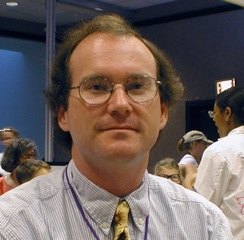
Matthew A. White Department of History University of Florida 2011-2012 Research Fellow
My PhD dissertation investigates the networks of science, public science, and education in Philadelphia from 1855 to 1829 through the history of the Wagner Free Institute of Science of Philadelphia (WFIS). During that time the WFIS and Philadelphia underwent a series of transformations that reflected shifting attitudes in American society towards science, the value of scientific knowledge to civic health, and priorities within diverse communities as to what aspects of science needed dissemination to the growing and evolving public. The Wagner Free Institute was a physical space that embodied the concerns of a specific group of prominent, and less than prominent, scientists, philanthropists, and educators who were actively negotiating intellectual concepts and practical skills associated with nineteenth century American science. Their goals were to create a locus for a complex set of activities that were directed towards bringing lay members of the Philadelphia community into the domain of science. Unlike established knowledge communities in Philadelphia such as the Academy of Natural Sciences, The Franklin Institute, and the American Philosophical Society that defined, either explicitly or implicitly, scientific knowledge in elitist terms, the Wagner Free Institute carved for itself a special niche that sought to actively engage the Philadelphia public for free. That public orientation in turn created an important 19th century institution that reflected the growing recognition in America that science could transform the public, but that it itself, was fundamentally transformed by this process. My historical examination traces this “public science” into the twentieth century and explores reasons for the decline of the institute in the context of historic trends in American science, public education, and even museological theory. My research at the WFIS and other area repositories also suggests that the Wagner was not immune to the controversies and tensions related to science, religion, class, race, and gender that roiled much of urban American during the late 19th century as the Wagner found itself the home for a diverse population of teachers and scientists; a diversity that often brought them into conflict with local scientists, religious leaders, newspapers, and educators. This conflict, seen early in the biography of founder William Wagner, helped define the WFIS, as well as its founder, as both part of, yet outside, the standard network of Philadelphia scientists and patrons of scientific. The Wagner Free Institute of Science of Philadelphia is an institution that is less known than some of its larger and older fellow Philadelphia. But it’s creation, with an explicitly populist and democratic agenda, as well as the cooperation and participation of the city’s most prominent scientific leaders with motives from intellectual, to altruistic, to pecuniary, make it an interesting study in 19th and early 20th century public science communities and networks, one that I hope will illuminate an important period in the history of American science, museums, and education. My PACHS Fellowship allowed me to spend substantial amounts of quality time in area libraries and museums. My research hours were mostly spent at the Wagner Free Institute of Science where I was able to view the relevant records available of the founder and business, curriculum, and scientific records of the institution. As importantly, the time spent at the Wagner with PACHS support allowed me to get to know the institution itself including its exhibitions, its programs, its lecture hall, its storage facilities, and, most of all, its people. Working in the confines of the historic structure will serve to give my ultimate dissertation texture and nuance that would be unavailable working only in the repository. In addition to the Wagner Free Institution of Science, I also spent significant amounts of time at the library at the Academy of Natural Sciences and other repositories, including the Philadelphia Free Library. From these other repositories, I was able to begin to decipher the networks and communities with which the Wagner operated in both cooperative and competitive projects and programs. In the same way as I was able to function in Philadelphia in cooperation with the Philadelphia Area Center for History of Science and it’s staff and stakeholders. While the subject of my dissertation is a hundred years in the past, I found the Philadelphia community to be as vibrant and supportive now as it was then.